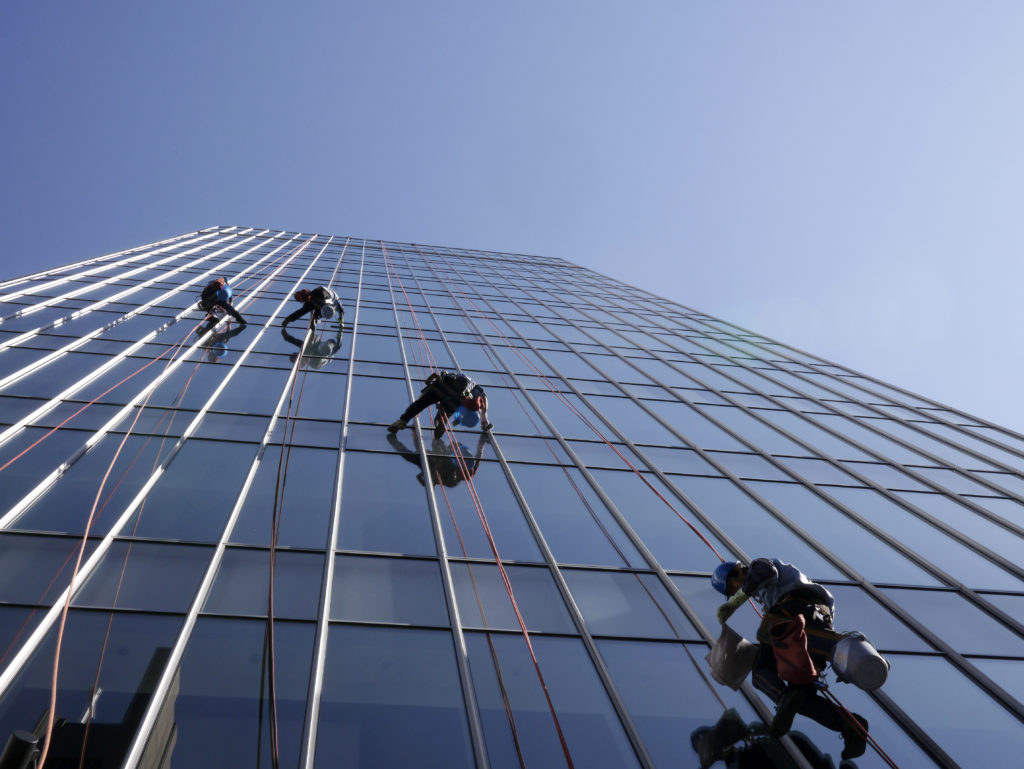Fall Protection Anchor Testing
A boatswain chair is commonly used for cleaning windows and performing exterior maintenance on multi-story buildings. But if you Google “window washers stranded mid-air” you will find pages and pages of news stories involving people hanging from rope descent systems on high-rise buildings around the world.
If you dig a little deeper, you’ll find a common root cause — equipment failure.
One particular component — a fall protection anchor — provides a secure point of attachment for a lifeline, lanyard, tether, or deceleration device and is, perhaps, the most critical piece of a personal fall arrest system.
The Importance of Fall Protection Anchors
Fall protection anchors on building roofs are regularly used by window washers and other maintenance personnel who use rope descent systems to perform work over the side of buildings. These anchors are necessary to protect the lives of people who will use them.
A fall protection anchor must be able to support a load of 5,000 pounds — a challenging requirement, particularly on framed and residential-type structures.
Although many anchors are rated to have a 5,000-pound ultimate strength, the installation of each anchor is a critical component of the ability of the fall anchor to withstand the load.
To ensure compliance with OSHA standards, you should have a qualified person design a complete fall protection system. OSHA defines a “qualified person” as “one who, by the possession of a recognized degree, certificate, or professional standing, or who by extensive knowledge, training, and experience, has successfully demonstrated the ability to resolve problems related to a specific subject, operation, or project.”
A properly installed fall protection system must maintain a safety factor of at least two — twice the impact force of a worker free — falling six feet and be installed under the supervision of a qualified person.
To avoid disasters, every fall protection anchor should be tested after the installation as a form of quality control for prefabricated anchors and their installation. Testing is incredibly important, as numerous problems have been detected due to defects in fabrication, design, and installation, as well as deterioration in service.
Incorrectly installed fall protection will not be able to hold the required load. For example, a fall protection anchor that has not been properly load-tested might easily pull out of a concrete topping slab on a high-rise building.
Employer Responsibility for Fall Protection
Employers are required to be aware of all fall hazards and eliminate and control employees’ exposure to them. Employers are legally responsible for anticipating fall hazards at a work site and must include appropriate fall protection measures in project plans.
At a minimum, fall hazards should be identified, and systems and procedures should be implemented to control the fall hazards. Effective planning reduces exposure to fall risks for workers, as well as for people who will use the fall protection anchor after the construction project is completed.
Building owners are required to provide written proof of testing by a qualified person to anyone using a fall protection anchor. This requirement encourages building owners to evaluate fall protection anchor status regularly.
Building owners commonly find that their fall protection anchors need to be tested, either due to a lapse in the ten-year interval, or because no documentation of previous proof loading is available. Thankfully, today’s requirements have brought the safety issue of newly-installed fall protection anchors to the attention of many construction companies.

